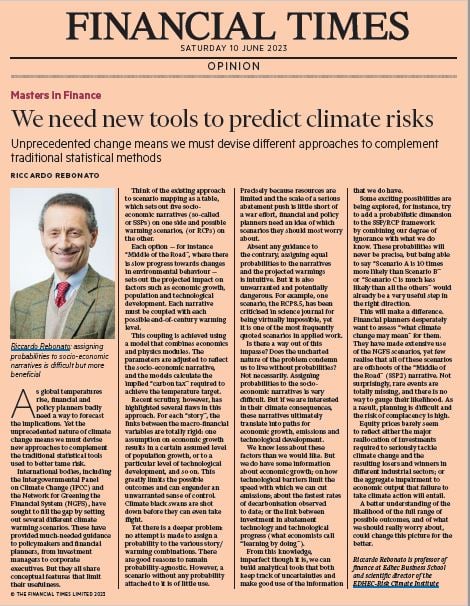
(Financial Times) Riccardo Rebonato: " We need new tools to predict climate risks"
Written on 12 Jun 2023.

Press review - Read the opinion piece published in The Financial Times on 10 June by Riccardo Rebonato, professor of climate finance at EDHEC Business School and Scientific Director of the EDHEC-Risk Climate Impact Institute.
Due to the unprecedented nature of climate change, conventional statistical tools prove inadequate, leading to the need for innovative approaches to supplement them. International entities like the Intergovernmental Panel on Climate Change (IPCC) and the Network for Greening the Financial System (NGFS) have made efforts to bridge this gap by presenting diverse climate warming scenarios. Although these scenarios offer valuable insights for policy makers and financial planners, they share conceptual features that restrict their effectiveness.
In a column "We need new tools to predict climate risks" published in the Financial Times, Professor Riccardo Rebonato calls for an extension of the climate scenario framework. He highlights some conceptual limitations of widely used climate scenarios and charts a path to develop new tools recognising the full range of possible outcomes and making the most of our imperfect knowledge of climate change and future climate change action.
Rebonato says: "(...) The unprecedented nature of climate change means we must devise new approaches to complement the traditional statistical tools used to better tame risk. We can build analytical tools that both keep track of uncertainties and make good use of the information that we do have (...).
To read this article, follow this link
Professor Rebonato, the latest recipient of the Quant Researcher of the Year awarded by PMR will conduct a webinar on June 29 entitled "Where is the Climate Risk Premium". He will explain what one may learn about the climate risk premium by employing a state-of-the-art integrated modeling approach, and discuss investment implications.


